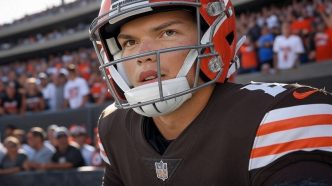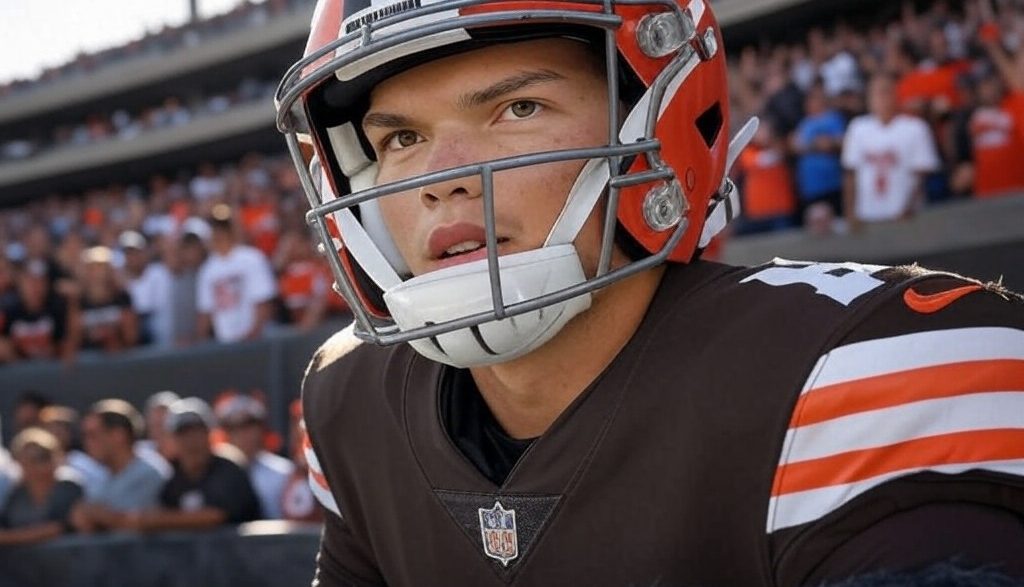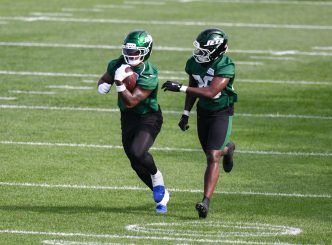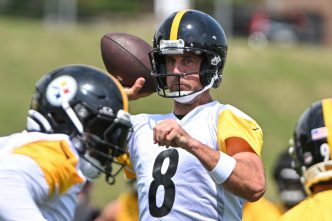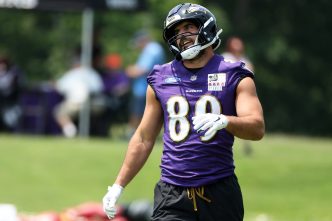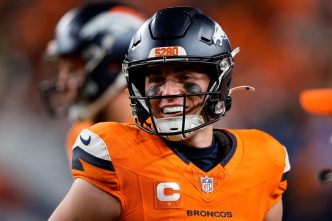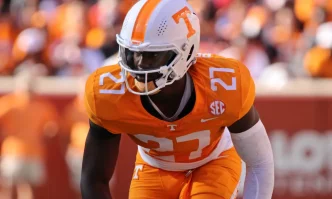The Cleveland Browns’ quarterback situation heading into the 2025 season is a fascinating puzzle, shaped by their surprising draft decisions and the uncertainty surrounding their current roster. Leading up to the 2025 NFL Draft, which concluded on April 26 at Lambeau Field, the Browns were heavily linked to several high-profile quarterback prospects, including Colorado’s Shedeur Sanders, Ole Miss’ Jaxson Dart, Alabama’s Jalen Milroe, and Louisville’s Tyler Shough. Many expected Cleveland to target one of these names early, especially with Deshaun Watson likely to miss most—if not all—of the 2025 season after suffering a torn Achilles in October 2024 and re-tearing it during recovery in January 2025. Instead, the Browns made waves with their selections, opting for Oregon’s Dillon Gabriel at No. 94 in the third round and then trading up to snag Sanders at No. 144 in the fifth round, a move that has sparked plenty of debate.
On Sunday, April 27, Browns insider Tony Grossi of ESPN Cleveland/The Land on Demand revealed that the Browns had Gabriel ranked fourth on their draft board among quarterbacks, behind Miami’s Cam Ward (taken No. 1 by the Titans), Dart (No. 25, Giants), and Shough (No. 40, Saints), but ahead of Milroe (No. 93, Seahawks) and Sanders, who was sixth. This ranking explains why Cleveland prioritized Gabriel over Sanders in the third round, even as Sanders’ historic slide—he was projected as a first-rounder by many—became the draft’s biggest storyline. Grossi’s insight aligns with the Browns’ actions: they passed on Sanders multiple times before trading their 166th and 192nd picks to the Seahawks to secure him in the fifth round, a move that shocked the NFL world given Sanders’ pedigree and production (4,134 yards, 37 touchdowns, 74% completion rate in 2024).
Browns reporter Mary Kay Cabot, speaking on the Orange and Brown Talk Podcast, wasn’t surprised by the Gabriel pick, noting that the team had been high on him throughout the pre-draft process. She revealed that on April 2, the Browns flew to Eugene, Oregon, for a private visit and dinner with Gabriel, just a day before heading to Boulder, Colorado, to meet with Sanders and two-way star Travis Hunter on April 3. This deliberate focus on Gabriel suggests Cleveland saw something special in the 5-foot-11, 24-year-old, despite his size and a consensus third-day projection—ESPN’s Matt Miller ranked him as the 235th overall prospect, while Sanders sat at No. 25. Gabriel’s appeal likely lies in his experience (six years across UCF, Oklahoma, and Oregon), accuracy (71.6% completion rate in 2024), and mobility (1,317 career rushing yards), traits GM Andrew Berry praised as “decorated, very poised, throws with anticipation, good mobility.”
Sanders’ fall, however, wasn’t just about the Browns’ preference for Gabriel—it was a league-wide repudiation of how he handled the pre-draft process. The Athletic’s Zac Jackson pointed out that Sanders’ slide had little to do with his on-field tape, which showed a second-round talent at worst, but rather his off-field demeanor. Reports of poor interviews, including a negative encounter with Giants coach Brian Daboll, painted Sanders as brash and entitled, a perception amplified by his celebrity upbringing as Deion Sanders’ son. Sanders skipped the Senior Bowl, didn’t throw at the combine, and his camp’s approach—coupled with Deion’s hints about “pulling an Eli” if Shedeur landed with the wrong team—rubbed teams the wrong way. Posts on X from February reflected this sentiment, with one NFL scout criticizing Sanders’ decision to skip the combine throw, saying it gave other quarterbacks like Dart a chance to shine, and Mel Kiper Jr. noting Sanders wasn’t the type of QB most NFL teams were looking for, pegging his true value between picks 15-30.
Now, the Browns’ quarterback room is a crowded mix of potential and uncertainty: Joe Flacco, a 40-year-old former Super Bowl MVP who went 4-1 with Cleveland in 2023; Kenny Pickett, a 2022 first-rounder acquired from the Eagles in March; Gabriel; and Sanders. Watson, still on the roster with a $135 million dead cap hit if released post-2025, is a non-factor for now. Jackson noted that Sanders is “guaranteed nothing,” starting as the likely fourth-stringer behind Flacco, Pickett, and Gabriel, despite arguably having the highest ceiling. Sanders’ pocket presence, accuracy, and ability to handle pressure—he took 48 sacks in 2024 behind a porous Colorado offensive line but still led the FBS in completion percentage—could make him a long-term answer, but his immediate role is far from secure.
The Browns’ preference for Gabriel, as revealed by Grossi and Cabot, suggests they see him as a safer bet to compete for the starting job in 2025. Gabriel’s six-year college career gave Cleveland extensive tape to evaluate, and his Senior Bowl performance under Browns assistant head coach Bubba Ventrone likely sealed their confidence. But Sanders’ selection at No. 144 was a low-risk, high-reward move—essentially a lottery ticket for a team that’s been searching for quarterback stability since returning to the NFL in 1999, with 40 different starters in that span. If Sanders develops, he could be the steal of the draft; if not, the Browns have Flacco’s experience, Pickett’s potential, and Gabriel’s readiness to fall back on.
Come August, after their final preseason game, the Browns will face a tough decision. NFL roster rules mandate a 53-man limit, and teams rarely carry more than three quarterbacks. With Watson likely on the physically unable to perform (PUP) list, Cleveland will have to choose between Flacco, Pickett, Gabriel, and Sanders for the active roster. Flacco, signed to a one-year, $4 million deal with incentives up to $13 million, is the favorite to start, given his familiarity with Kevin Stefanski’s system. Pickett, despite a rocky tenure in Pittsburgh (14-10 as a starter but plagued by poor pocket awareness), has the pedigree and mobility Stefanski values. Gabriel, as the higher-rated draft pick, seems to have the coaching staff’s trust. That leaves Sanders as the odd man out unless he outperforms expectations in camp. The Browns could try to trade Pickett or Flacco—both have attracted interest in the past—or stash Sanders on the practice squad, though his profile makes that unlikely. Cutting Sanders would be a PR nightmare after his high-profile slide, but Cleveland’s history of quarterback mismanagement (e.g., the Watson trade, labeled a “big swing-and-miss” by owner Jimmy Haslam) doesn’t inspire confidence in their decision-making.
The Browns’ choice to prioritize Gabriel over Sanders reflects a calculated bet on fit provveds a more critical lens on their draft strategy. While Sanders might have the higher ceiling, his pre-draft missteps and the Browns’ crowded QB room mean he’ll need to prove himself all over again. Meanwhile, Gabriel’s selection shows Cleveland’s willingness to take a chance on a less heralded prospect with a proven track record. By the end of the preseason, the Browns will have to make a big call—one that could shape their 2025 season and beyond.

